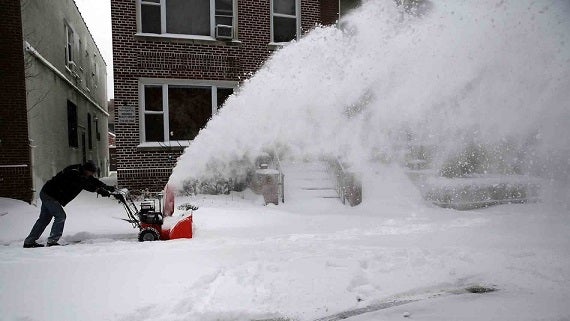Resiliency+: Demand Response Can Help Prevent Blackouts in the Northeast
Resiliency+ is a new blog series, which highlights the ways in which different clean energy resources and technologies can play an important part in increasing energy resiliency in New Jersey and around the country. Check back every two weeks, or sign up to receive Energy Exchange blog posts via email.

The Federal Energy Regulatory Commission (FERC) describes demand response as “changes in electric usage by end-use customers from their normal consumption patterns in response to changes in the price of electricity over time, or to incentive payments designed to induce lower electricity use at times of high wholesale market prices or when system reliability is jeopardized.”
There is quite a bit to unpack in that definition, but put simply, demand response is little more than a way of financially motivating customers to reduce their energy use when electricity is particularly scarce and expensive or when the wires are overburdened (check out EDF’s other blog posts and resources that go into more detail). The end result is a more efficient electric grid which is less overbuilt and less dependent on inefficient fossil-fuel plants that are often uneconomic to operate and highly polluting, but may be called upon when all else fails.
Demand response can be a great resiliency tool by working to reduce stress on our electricity grid during times of prolonged disaster or shifts in weather. For example, last winter the Northeast experienced a prolonged cold snap, during which people used more electricity than normal to stay warm and keep the lights on. Making matters worse, up to 20% of power plants were off-line, either due to scheduled maintenance or because of the cold weather. Conditions like these – in which energy demand is higher than anticipated and supply is less than expected – can lead to black-outs. Fortunately, demand response proved to be a vital piece of the solution. Customers reduced their electricity usage by 1,900 MW of electricity in parts of the Midwest and Northeast (covered by ‘PJM Interconnection’, a regional electricity transmission organization). Demand response helped this region avoid the worst case scenario: a blackout for all customers during a time when heat was desperately needed.
In addition to improving resiliency, demand response provides a number of environmental benefits. First, demand response can help to reduce ‘peak’ consumption of electricity, a time when electricity is usually both the most costly and the most polluting. Demand response reduces or eliminates the need for peak resources, like coal-burning power plants, by reducing demand. Second, demand response can help encourage renewable resources like solar and wind power by helping to address intermittency issues. For example, when the wind stops blowing or the sun stops shining, demand response, particularly when automated, can reduce the need for electric capacity until it comes back online.
New Jersey falls within the geographic bounds of the aforementioned regional transmission organization, PJM Interconnection (PJM coordinates electricity usage throughout much of the Midwest and Northeast), which is a leader in demand response. A FERC survey found that New Jersey’s reported demand response capability as of 2012 was 910 MW. However, more demand response is possible in the state through automated demand response programs provided by third parties and utilities.
Superstorm Sandy was a wake-up call to New Jersey after a third of businesses and homes in the state lost power for days and in some cases, weeks. State officials are recognizing the crucial importance of grid resiliency during both singular extreme weather events, like Superstorm Sandy, and prolonged weather events, like cold snaps and heat waves. By increasing demand response across the state, New Jersey can begin to address the negative impacts of these weather events, and in turn, create a more resilient electrical grid.










